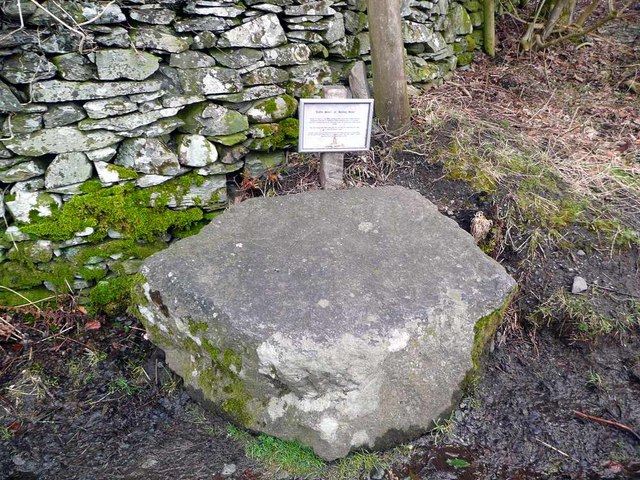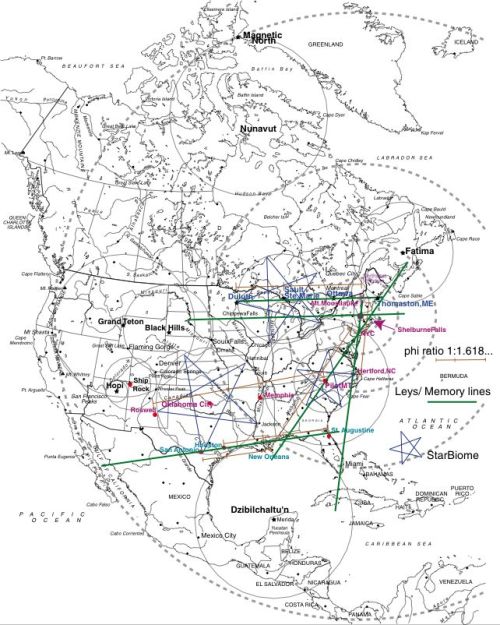You guys. Can we talk about The Raven Boys?? I mean we're going to anyway, but oh man I LOVED IT. I am just going to go ahead and admit that I got pretty fangirl-y about it and immediately checked out the second book and I still can't decide if Ronan, Adam, Persephone or Calla is my favorite. IT WAS SO GOOD.
So I've been looking forward to writing the blog about it this month but it has been super busy lately, what with the holidays and such, so it has been put off until today. But now I have time! And we can talk about the characters and ley lines and MAGIC.
Part of why I love The Raven Boys so much is because the supernatural aspects of the story draw a lot from real history. The corpse roads and ley lines, for example.
First of all, they technically aren't interchangeable, as it's stated in the book. Ley lines and corpse roads are two separate things.
But let's start with corpse roads, since that's where the story also begins.
Corpse roads were actually used for the transportation of dead people. Corpses. Back in Ye Olden Tymes (England's late medieval period), population expansion and an increase of church building took place. A lot of these churches were connected to the older, more established "mother churches" (so to speak) that were more often located in larger towns or cities. Whereas the smaller, newer churches were often out in small villages in the countryside. And the mother churches were the only ones that had burying rights. So in those small villages, when you died, you had to be transported to the mother church to be buried. And unless you were a very wealthy person, your coffin had to be carried to this location. And obviously, you don't want to be traipsing over hills and streams and everything else while carrying a dead body, so corpse roads were established. And they were the easiest, straightest, most efficient routes to the mother church. In some places there are still "coffin stones" (large flat stones to rest the coffin on while you take a break) along the route. Though a lot of the original corpse roads have been forgotten and taken over by nature, you can sometimes use church locations and field/feature names to trace the route they would have taken.
 |
| A coffin stone on the funeral road from Rydal to Ambleside in the UK |
So anyway, there were obviously a lot of superstitions about corpse roads. As there are with anything having to do with dead people and spirits and such. Most of them involve "corpse candles" (small blue balls of light or flames that are believed to be spirits of the dead) leading travelers astray or seen traveling the route from their home to the cemetery at the church where they were buried. Also, though they strived to take the easiest routes, they also made sure to cross over bridges or stepping stones because running water was thought to keep the spirits of the dead from trying to return home.
And, the part about St. Mark's Eve is an actual thing. From Wikipedia:
"An old woman at Fryup in Yorkshire was well known locally for keeping the "Mark's e’en watch" (24 April), as she lived alongside a corpse road known as the "Old Hell Road". In this 'watch', typically a village seer would hold a vigil between 11 pm and 1 am on St. Mark's Day, in order to look for the wraiths of those who would die in the following year."
HOW ABOUT THAT, HUH? COOL STUFF.
Anywho, there is soooooo much more on corpse roads on Wikipedia and probably a million other sites on the internet, and you should definitely go look them up. The info is super neato and rooted deep in ancient history and very worth reading.
But, we are moving on! To ley lines!
 |
| Some of North America's supposed ley lines |
So ley lines were first theorized in 1921 by a man named Alfred Watkins, who was an amateur archaeologist. From Wikipedia, again:
"On 30 June 1921, Alfred Watkins visited Blackwardine in Herefordshire, and had been driving along a road near the village (which has now virtually disappeared). Attracted by the nearby archaeological investigation of a Roman camp, he stopped his car to compare the landscape on either side of the road with the marked features on his much used map. While gazing at the scene around him and consulting the map, he saw, in the words of his son, "like a chain of fairy lights" a series of straight alignments of various ancient features, such as standing stones, wayside crosses, causeways, hill forts, and ancient churches on mounds. He realized immediately that the potential discovery had to be checked from higher ground when during a revelation he noticed that many of the footpaths there seemed to connect one hilltop to another in a straight line."So, as you can probably tell, it is certainly probable that ley lines are connected to corpse roads. Both tend to be straight paths that connect spiritually significant places. And Watkins' theory fits with the idea as well. He believed that in ancient times, when the world was more heavily forested and wild, that the country was criss-crossed by these straight-line travel paths that used prominent features of the landscape and significant sites as way points. Which makes loads of sense, right? People all the way back through time have used landmarks to help navigate through the countryside.
Well anyway, as with corpse roads, there is a lot of spiritual stuff surrounding them. In 1969 a man named John Mitchell combined Watkins work with his own thoughts about Chinese feng shui and the spiritual concept of land forms and ancient monuments and published The View Over Atlantis. The book essentially put forward the idea that ley lines have a special energy and resonate with a psychic or mystic power. *Especially* since they often connect spiritual places. SOUND FAMILIAR?? It's basically where all of the ideas in The Raven Boys come from.
However, let me go ahead and tell you that if you plan on researching ley lines for yourself, you are going to run into some of the craziest people on the internet. There are loads of conspiracy theorists who believe that the ley lines have to do with major world events and crazy weather and everything else under the sun. A lot of people seem to think that in areas where the ley lines cross, there is more UFO activity. The internet is a crazy place, my friends. Wikipedia gives you a pretty straightforward explanation of them, but it is pretty fun to read some of the other theories out there.
Now that you have all had your history lesson for the day, I can't wait to talk about it with you all on Thursday! I know we had quite a few people sign up and some didn't get a copy of the book, but just bring yourselves and sit and chat with us anyway. I actually couldn't get a copy either, and ended up buying it on my Kindle. But regardless, I will see you all on Thursday at 6pm sharp for some creepy supernatural book chat! Adios!

No comments:
Post a Comment